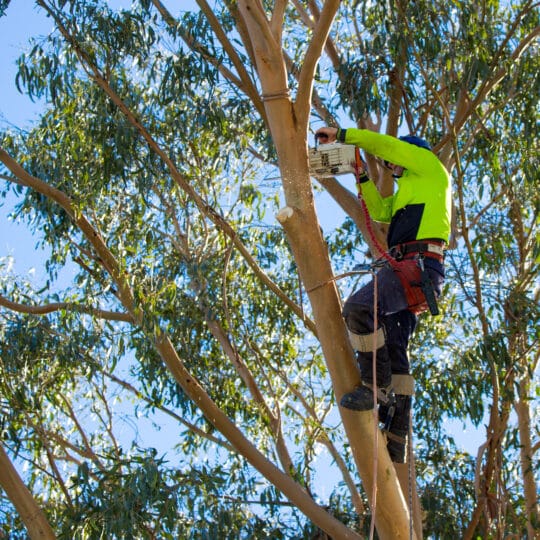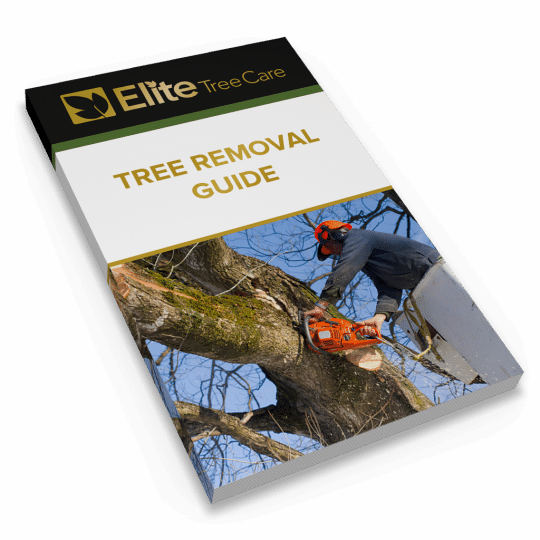Steps to Take During Tree Removal
To Maximize Safety and Efficiency
Posted
February 22, 2024

Late winter is an ideal time for tree removal. The entire process requires proper planning, expert execution, and careful steps to help ensure safety of yourself and surrounding property. Here are several tree removal steps to consider before even one branch is cut.
Tree Removal Safety
Whether you’re removing a young tree or a massive mature one, there are several safety measures to consider to help protect yourself, your property, and the tree if it’s being transplanted. In all cases, the following safety equipment is recommended as soon as power tools such as axes, chainsaws, or electric pruners are in the picture:
- Safety glasses
- Heavy-duty gloves
- Steel-toe boots
- Long sleeves and pants
- Hard hat
- Sharpened tools for easy, cleaner cuts
- A spotter for falling debris
Don’t know how to properly use the potentially dangerous tools? Your first move should be to call a trained professional specializing in tree removal.
Tree Removal Steps
Even before you start cutting down a tree, it’s best to plan the process. If you have a professional taking care of the project for you, you can discuss their plan so you know what to expect and what should be quoted.
- First, address any areas of concern. Any visibly weak or diseased branches should be pruned first. This can help prevent them coming down on their own during the process.
- Determine which type of rigging will safely remove the larger limbs without causing damage to the surrounding area. This is especially important if the tree is close to utility lines, your home, or other structures. A pro will know how to create a safe environment.
Some of the most common rigging tools includes:
- Slings: used to restrain the limbs after they have been cut so they do not cause damage while being taken away.
- Safety rope systems: multiple ropes are attached throughout the top of the tree to support and control felled limbs so they don’t hit objects below.
- Cranes: once sections of the tree have been removed, cranes may be used to lift large pieces away from the job site. This also helps maneuver heavy limbs around areas where other larger vehicles can’t access.
There are also several ways of cutting down a tree.
- Chainsaw: basic method of cutting through the trunk in sections for easy removal.
- Slotting/Notching: two cuts are made on opposite sides of the trunk at an angle towards each other to weaken the branch before making one final cut.
Felling wedges can be used during any process to help guide the falling tree away from obstacles such as power lines or buildings.
Professional Tree Removal
Of course, many of these tree removal steps are best handled by a professional that has the knowledge, skill, and equipment necessary to safely and effectively remove a tree. Let Elite Tree Care be your first call before your next tree removal project. After an initial consultation, we can provide a quote for the best way to handle any tree situation.

Download Your FREE Tree Removal Guide
Even dedicated DIYers should think twice before taking on the task of tree removal. Our guide will help you decide whether to hire a tree service and how to get the most value for your money.